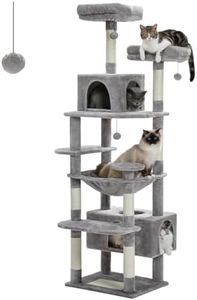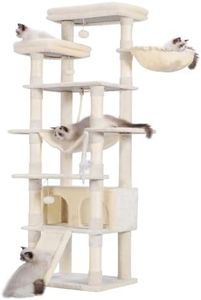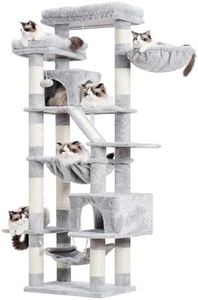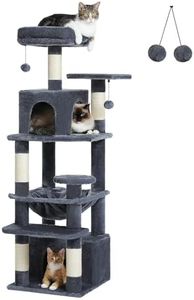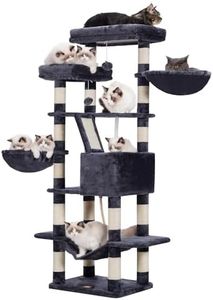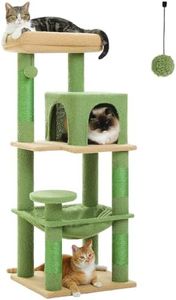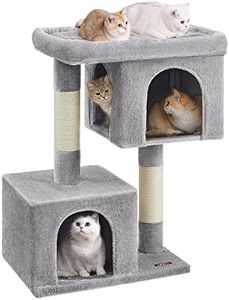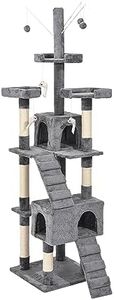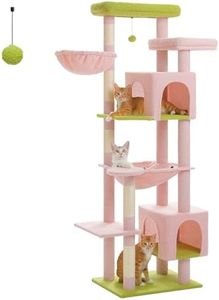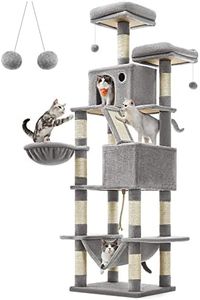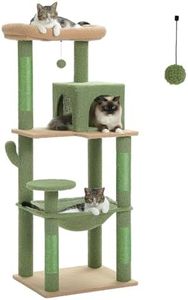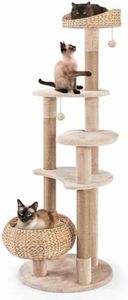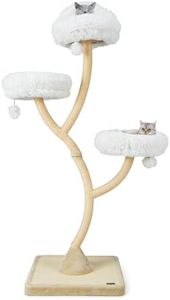We Use CookiesWe use cookies to enhance the security, performance,
functionality and for analytical and promotional activities. By continuing to browse this site you
are agreeing to our privacy policy
10 Best Cat Trees
From leading brands and best sellers available on the web.Buying Guide for the Best Cat Trees
Choosing the right cat tree is all about matching your cat’s needs and preferences with your available space and home decor. Cat trees offer a dedicated area for your cat to climb, scratch, perch, and rest, helping keep them stimulated and saving your furniture from wear and tear. When selecting a cat tree, think about your cat's age, agility, size, and play style, as well as where you plan to place it in your home. Understanding the main features will help you make an informed decision that keeps both your cat and you happy.Height and LevelsThe height and number of levels of a cat tree determine how much climbing and exploring your cat can do. Taller cat trees are great for energetic, young, or adventurous cats who love to climb, while shorter models are safer for older cats or those with mobility issues. Consider how confident your cat is with heights—cautious or senior cats may prefer lower platforms, while bold or young cats will enjoy taller trees with multiple levels.
Stability and ConstructionStability means how sturdy and safe the cat tree is when your cat jumps on it, while construction covers the quality of materials and assembly. This is important because wobbly or poorly built trees can be dangerous, especially for bigger cats. For one small or light cat, a lighter tree may be fine, but households with multiple or heavy cats should focus on sturdy trees with wide bases and solid posts. Always try to check the weight capacity and how the tree is put together.
Scratching SurfacesMost cat trees include scratching posts wrapped in sisal rope or covered with carpet. These surfaces provide cats with a place to satisfy their natural urge to scratch. Sisal is generally more durable than carpet. If your cat loves scratching, choose a tree with lots of scratching post areas; for cats less interested in scratching, this feature is less critical, but still useful for encouraging good habits.
Resting and Hiding SpotsResting spots include flat platforms, hammocks, or enclosed cubbies. Cats often like to perch high up to observe their territory or retreat into a cozy hideaway to nap. If your cat is shy, look for trees with covered hideouts; if your cat likes to lounge and watch, open platforms or hammocks may be more suitable. Multiple cats will appreciate trees with several resting spots to reduce competition.
Size and FootprintSize refers both to the height of the cat tree and to how much floor space it uses. This is important because a tree that is too large may overpower a small room, while one that is too small may not meet your cat’s needs. Measure your space before buying and consider the tree’s shape—narrower models are good for tight spaces, while larger, sprawling trees offer more play but need more room.
Ease of CleaningEase of cleaning covers how simple it is to remove hair, dander, or accidents from the cat tree. Some trees have removable beds or washable covers, which make cleaning easier. Cats with long hair or those that shed heavily benefit from trees with washable or easy-to-vacuum surfaces. If you want low maintenance, look for designs that allow you to reach all the nooks easily.
